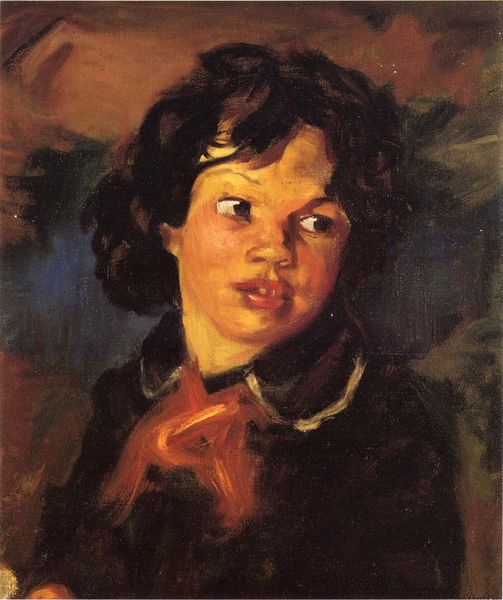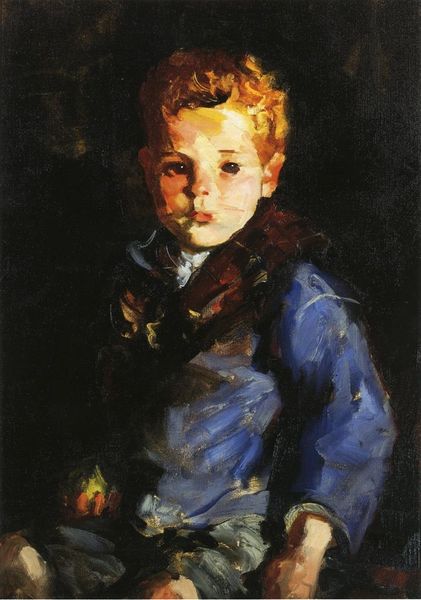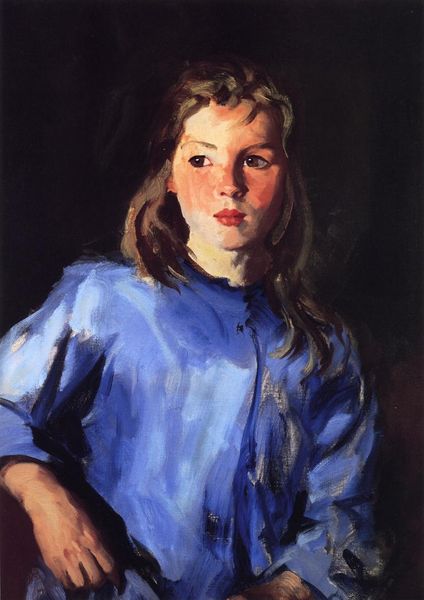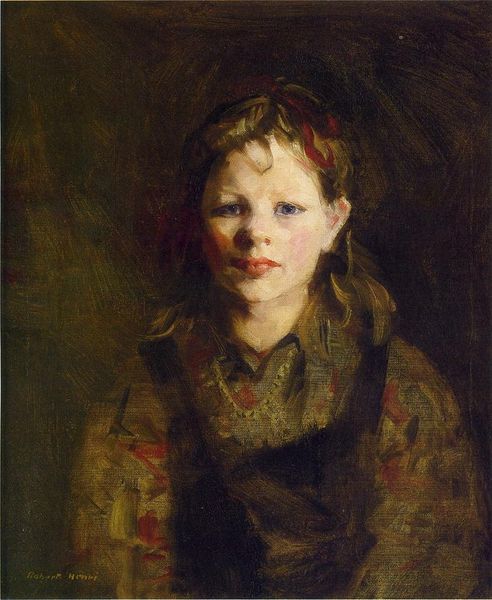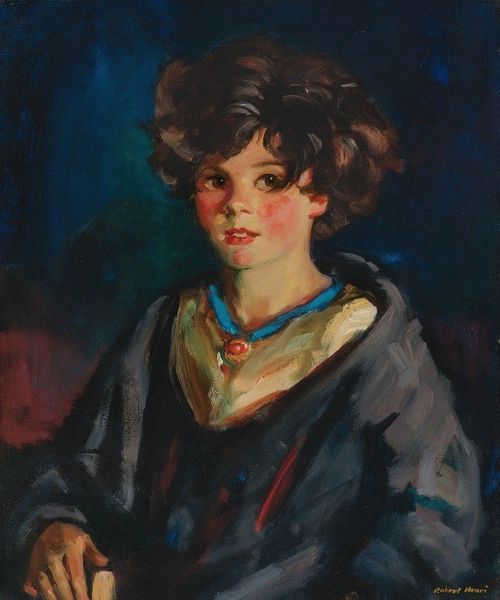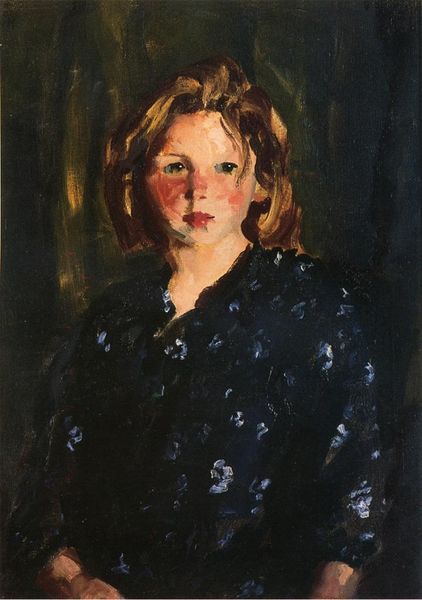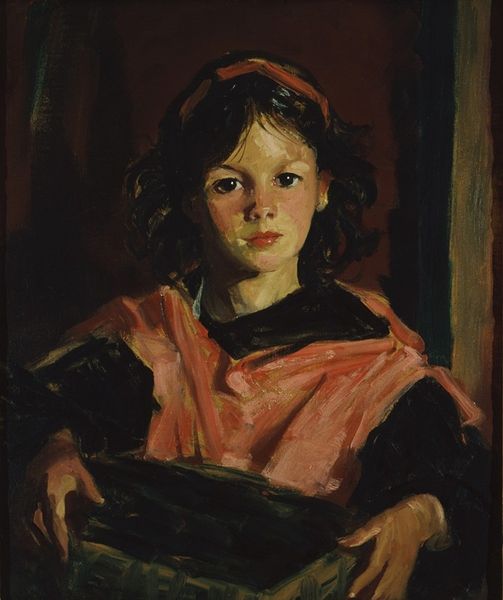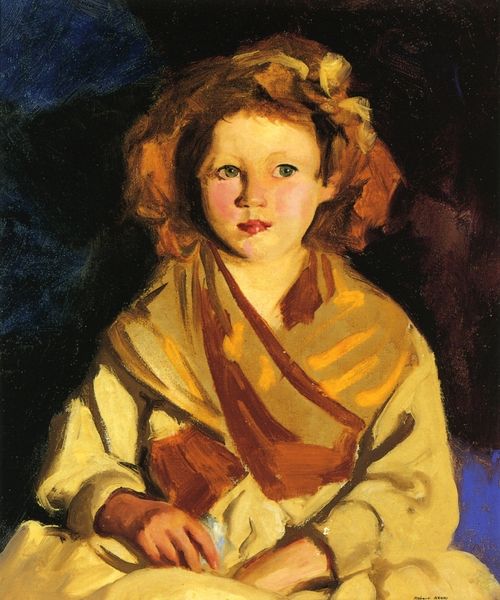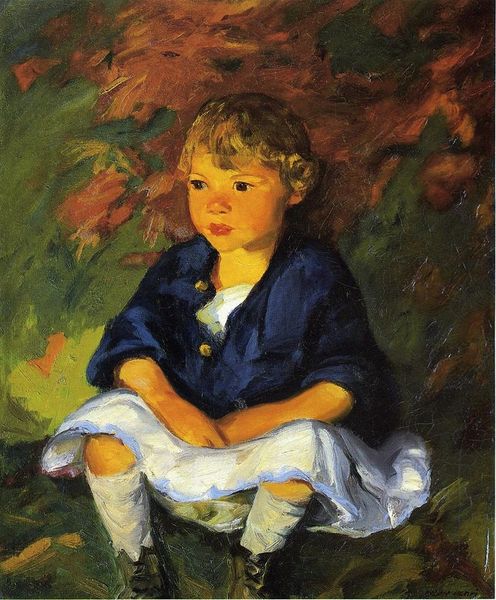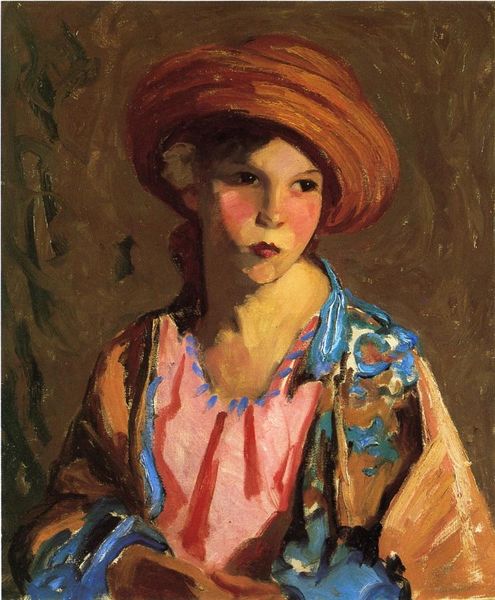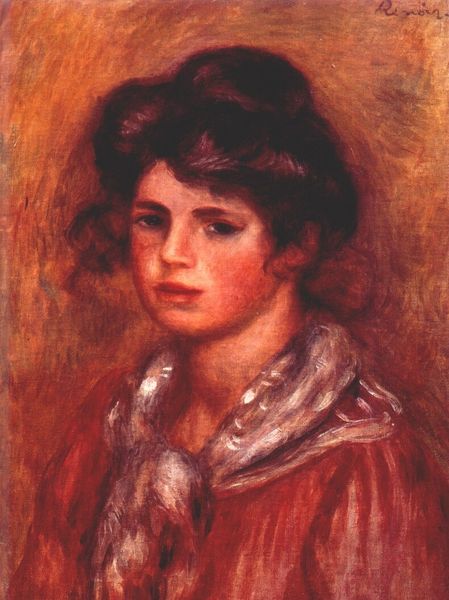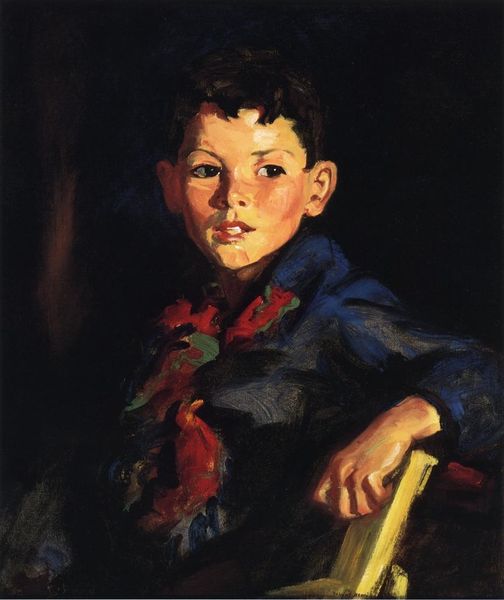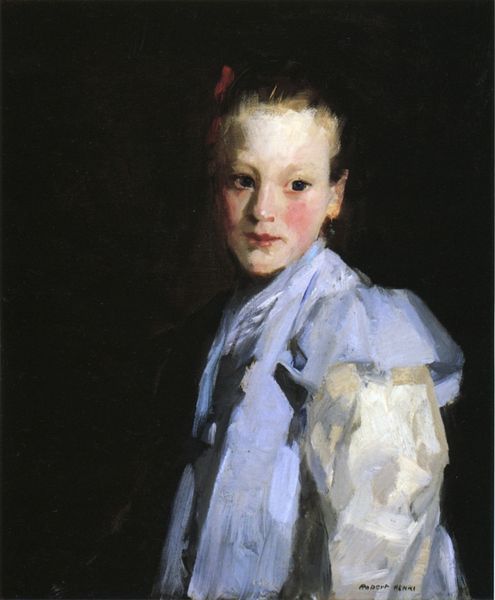
oil-paint, impasto
#
portrait
#
oil-paint
#
oil painting
#
impasto
#
portrait reference
#
portrait head and shoulder
#
ashcan-school
#
genre-painting
#
portrait art
Copyright: Public domain
Robert Henri painted "Mary Ann Caferty" during the early 20th century, a time when American art began to embrace urban realism. Henri, a key figure of the Ashcan School, sought to capture the lives of everyday people, often from marginalized communities. Mary Ann's gaze, direct and unidealized, challenges the sentimental portraiture typical of the era. Her slightly flushed cheeks and dark hair frame a face that seems both innocent and wise. Henri’s choice to paint working-class children, rather than the wealthy elite, was a conscious decision. His work offered an alternative narrative, celebrating the dignity and humanity of those often overlooked. As Henri once said, "It isn't the subject that counts but what you feel about it.” This painting speaks to the emotional resonance of seeing oneself, or someone like oneself, represented in art. The simple, yet profound, act of visibility can be a powerful form of recognition and validation. "Mary Ann Caferty" invites us to consider the complexities of identity, representation, and the enduring power of portraiture.
Comments
No comments
Be the first to comment and join the conversation on the ultimate creative platform.

